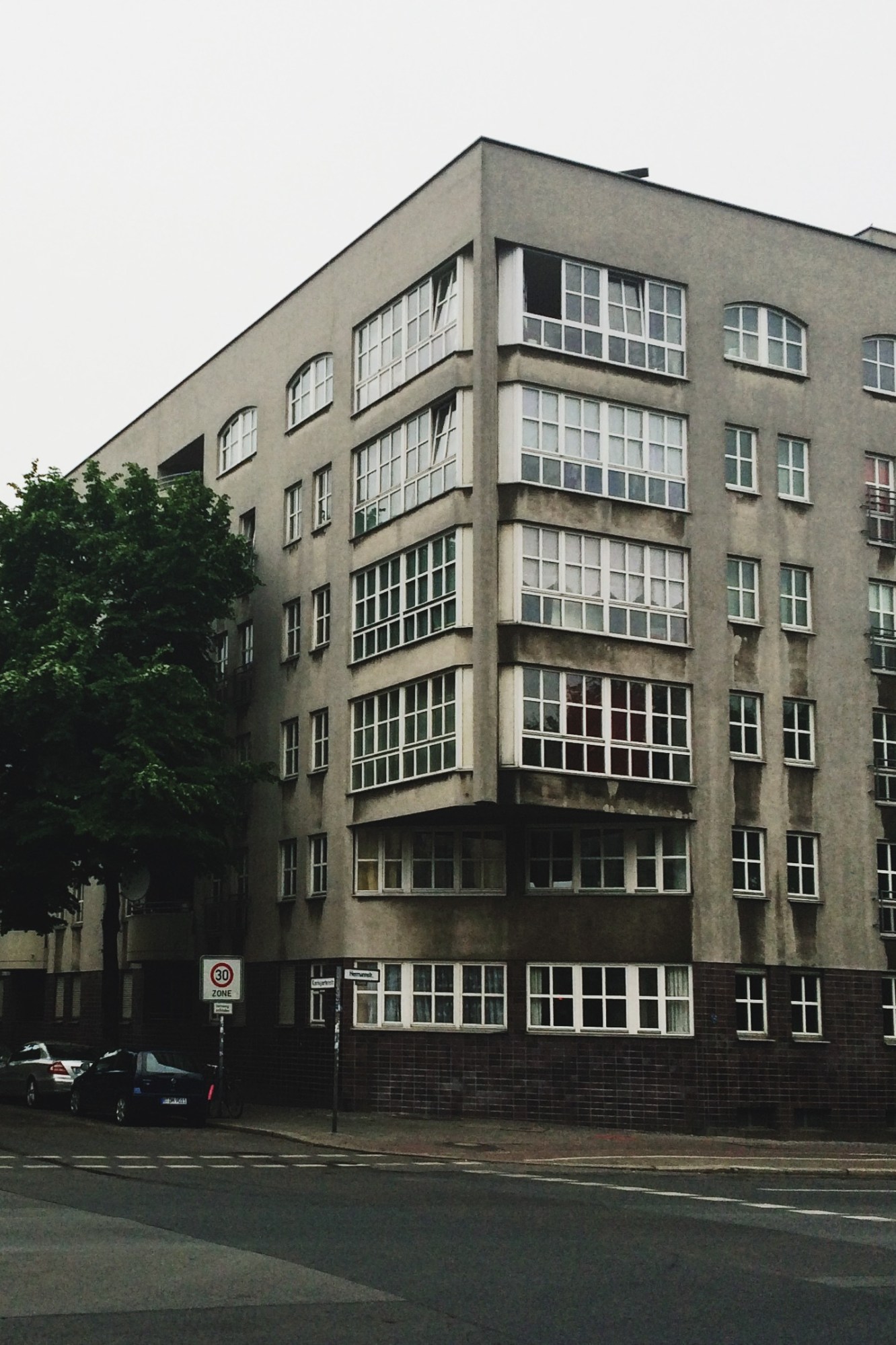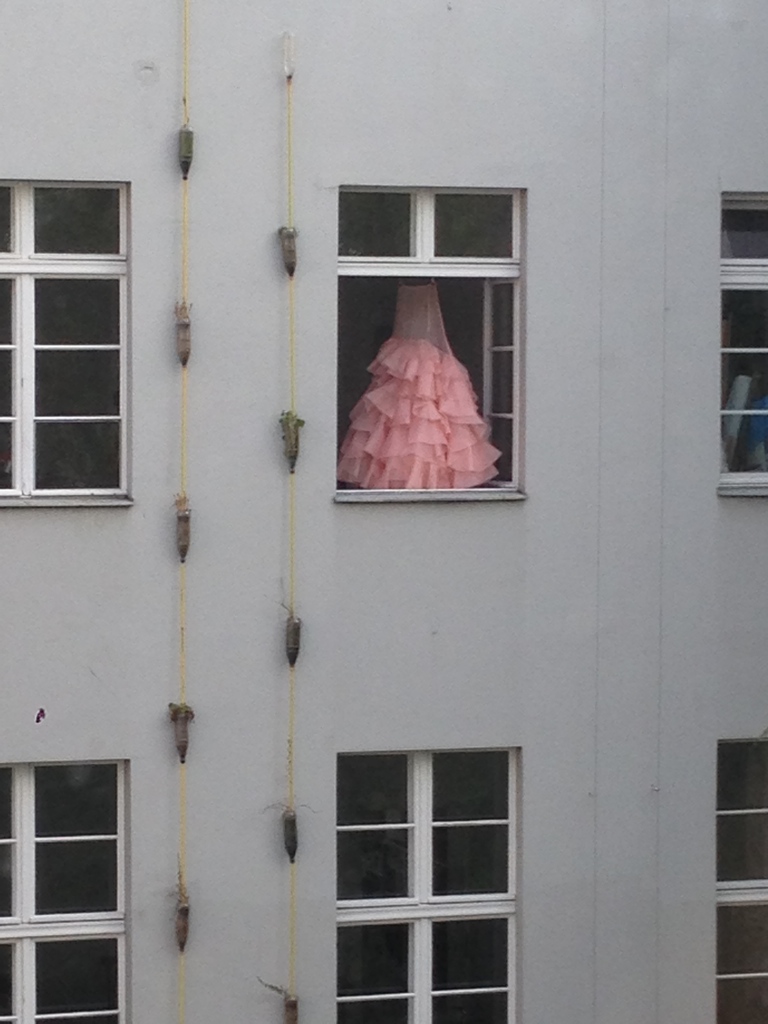Is a fashion degree worth the money in 2018? As a new wave of students enrol and apply to colleges, i-D and 1 Granary take a closer look at fashion education and beyond, to better understand how to make it in one of the toughest industries to crack.
From Montreal, we jump across the pond to Berlin, a city that has, as you already know, been bathing in the limelight for some time now. And yet, for just as long, it’s constantly managed to feel like it’s standing on the edge of becoming something big, only to fail to take the necessary leap. With all the pieces in place for a fashion infrastructure with real potential to recalibrate the status quo, and an emerging cohort of designers making waves worldwide, could now actually be its moment?
“I’ve sometimes felt that a lot of designs were very safe,” says Cissel Dubbick, a final year student at Weißensee Kunsthochschule Berlin, one of Berlin’s two leading fashion education establishments — the other being the Berlin University of the Arts, or Universität der Künste Berlin (UdK), Germany’s largest and foremost arts university. “Perhaps this comes from the freedom we’re given,” she continues via email, “It’s not as strict as other schools, which could also lead to less creativity. Sometimes, you need to be pushed in order to fully explore your potential.” Her words aren’t far off those of Marie-Ève Lecavalier’s, a designer I’d spoken with in Montreal; a coincidence, perhaps, but one that has me begin to suspect a common sentiment bridging the fashion communities of these two cities that, on paper at least, bear a fair few things in common. But there are just as many things between the two that couldn’t be more different: approach to fashion education is just one. While in Montreal, it was the dictatorial rigidity and lacking creativity that was bemoaned, it’s Berlin’s unbridled creative freedom and often-lacking structure that some find too much. The grass is always greener, after all.

But the German capital’s fashion infrastructure could never be considered lacking or underdeveloped: a centre of clothes-making in the 1920s, the course of history with which we are all too aware stood in the way of Berlin’s continuous development towards becoming the major centre of global industry it may otherwise have been. Decimated by war, to then be divided in two, the city was dealt a pretty poor hand compared to those dealt other western capitals. In fact, when you think about it, the city, in its current iteration, hasn’t even hit 30 yet — its official date of birth is 3 October 1990. But this turbulent history has proven something of a plus for the city’s fashion education set-up, as Professor Valeska Schmidt Thomsen, director of the fashion department at UdK, explains: “Due to this historical situation, we have many schools in Berlin where you can study fashion design. We have everything doubled, as we had East and West,” with Weißensee in the former, UdK in the latter. Adding Akademie Mode & Design (AMD) and the recently defunct ESMOD, a satellite of the esteemed Parisian school, to the equation, that gives us three, formerly four, major fashion education establishments — that easily rivals London or New York in terms of the range and scope of what’s on offer.
Berlin, then, would seem to have all the trappings of a paradise for budding fashion folk — it’s free of London and New York’s prohibitive cost, and of Paris’ prohibitive cliquerie (debatable, given that at least a quarter of Paris has moved to Berlin, but let’s say so for the sake of making a point). What’s more, it’s student-friendly to the first-degree, a major seat of European academia, and home to the Humboldt, Freie and Technische universities. But that, in and of itself, is perhaps one of the things that stands in its way. While Berlin has always represented a centre of radical and creative thought, a spiritual incubator for thinkers like Luxemburg, Brecht and Benjamin, it’s always been a bit of bubble, cut off from the clinically commercial existence of the big wide world. And fashion, more so than any other creative enterprise, is explicitly bound to the big wide world.
“While Berlin has always represented a centre of radical and creative thought, a spiritual incubator for thinkers like Luxemburg, Brecht and Benjamin, it’s always been a bit of bubble, cut off from the clinically commercial existence of the big wide world.”
It’s something that Nicolas Stephan Fischer, an UdK graduate who hopped over to Central Saint Martins to complete his masters, noticed while undertaking his BA at his German alma mater. “I would say that their approach, which is a very free one, offers a truly safe space for artistic development, but sometimes lacks commercial awareness. That, in a nutshell, is what Berlin is in the bigger picture: a place of endless creativity that still needs to be channeled and find an outlet.” It’s a key point, one that comes to life on a quick stroll through any of the city’s characteristic Kieze: “There are many people here that are a bit unoccupied, sitting in bars and talking about projects that will never actually happen,” says Professor Schmidt-Thomsen, referring to the terraces overflowing with wistful beer-swillers on an early Tuesday afternoon, a true Berlin sight. “This is quite usual in Berlin!”
Nam Nguyen, a recent Weißensee graduate and creative director of Berlin’s emerging design collective of the moment STANDARDCLOTHING joins the chorus: “This whole thing of giving students a lot of freedom and time is great if you want to just do your own thing. But fashion’s not just about creating a concept and two looks for each semester, you need to think deeper, with a greater sense of the industry; that’s the interesting part, being super creative, but being able to package it effectively. I discussed this a lot with my teacher,” he continues over the phone from Paris, where he’s currently freelancing for a range of houses, “I said it’s ridiculous, and asked why this or that can’t be changed. He responded that that was just the way the school worked, that they offer a certain level of freedom, and if someone’s clever enough, they’ll figure the rest out themselves.”

Which is just what a handful of the city’s designers have done: against a backdrop of attempts to make the city ‘happen’ on the scale to which it aspires, including a Mercedes-Benz-sponsored fashion week, the charge to reshape Berlin’s international reputation has, over the last couple of years, been led by a sizeable handful of brands: GmbH, Ottolinger, Dumitrascu, Namilia, Nhu Duong: all Berlin-based, all white-hot, contemporary proof of Berlin’s potential to serve as fertile ground for global brands. Foregoing the presentational contexts on offer at home, they’ve opted to go where the buyers are, rather than waiting for the buyers to come to them, presenting instead in New York or London, Paris or Milan. “And then there’s Berlin Showroom,” adds Professor Schmidt-Thomsen, an initiative that takes young Berlin designers to Paris, spearheaded by Arne Eberle, a mainstay of the scene, in partnership with the Berlin Senate.
Does this all point to what was previously thought unthinkable, that Berlin is overcoming its history of failure to ascend the fashion throne? Well, signs may, at some level, point that way, but there still remains a gaping chasm between appearances and reality: the success of few still-emerging brands does not necessarily make for a sustainable scene, as Nam Nguyen is quick to point out: “At this point it’s difficult to say whether brands like Ottolinger and GmbH are going to change anything. Berlin used to be a clothing manufacturing city in the 20s, but I don’t know if it’s going to get there again,” caused in part by the fact that, unlike in Montreal, where young designers have begun to turn to local manufacturers, few of the mentioned designers actually produce in city. “I’ve been talking a lot with production people, and seamstresses around Berlin. I’d love to produce here, but it’s just not possible — there’s no money, there are no regular clients, it’s always for one season, and then designers go elsewhere, to Poland for example.”
“The charge to reshape Berlin’s international reputation has, over the last couple of years, been led by a sizeable handful of brands: GmbH, Ottolinger, Dumitrascu, Namilia, Nhu Duong: all Berlin-based, all white-hot, contemporary proof of Berlin’s potential to serve as fertile ground for global brands.”
Enter Fashion Council Germany, the 2015-established initiative tasked with advancing the profiles of German designers both domestically and abroad. Speaking over the phone with Claudia Hoffmann, a member of the board that counts Vogue Germany Editor-in-Chief Christiane Arp among its members, she addresses the issue head-on: “While all the manufacturers may not be in Berlin, compared to, say, in Paris, it’s something we want to work on, getting all the manufacturers back to Berlin, or at least within Germany,” a bold institutional commitment that Montreal and Kyiv could only dream of. The council’s commitments even extend to the educational plain, with plans to tackle the key issue raised by students and professionals alike: the worrying gap between the industry and the German fashion school system. “It’s one of the important steps I’m working on now with the Fashion Council,” says Claudia, the council’s representative for educational development. “We’re looking to create a program over the next few years that will foster a successful exchange between the German industry and the German schools. It’s important for the industry to be able to select the most talented emerging designers, curated in collaboration between the FCG and the schools.”
It is both admirable and enviable that such strong efforts are being made by such a young fashion council — though, to make anything short of a bold effort would be a foolish move given Germany’s status as one of the world’s most powerful consumer economies. But with such a key focus on fostering and promoting opportunities for Germany’s students, one can’t help but wonder whether more attention should be paid to those actually delivering the education. Professor Schmidt-Thomsen thinks so: “I hope that the Fashion Council doesn’t just focus on education from a student’s perspective — we’re also confronted with a lot of new developments, and we have no time to research them.” With the industry developing at breakneck pace, it is nothing short of crucial that the actual centres of educational provision are as up-to-speed with the latest developments in technology and sustainability as the industry wants emerging students to be. “We also need specialised courses from people in the fashion world to help us. I hope the Fashion Council will develop programs for the teachers, it’s very important that they do.”

If anything is clear here, it’s that Berlin has everything it needs to develop into a unique fashion centre; it’s home to a comprehensive infrastructure, a council that cares, even a healthy population of senior industry figures, “people like David Fischer of Highsnobiety, Joerg and Maria Koch of 032c,” as Claudia remarks. “They’re all based here, but their reach is global.” And with Brexit looming, the city is poised to benefit, and is looking to do all it can to make its package as attractive as possible to the potential windfall of international students, starting with the relaxation of the stringent German language requirements for courses at its schools. “Berlin will totally benefit from Brexit,” says Claudia with unmistakable confidence, “it’s a city that’s affordable, both from the perspective of living, and from that of the education on offer. And the schools offer high-quality programs with great reputations. A lot of young designers from across Europe, including the UK, will show interest in coming to Berlin, German fashion schools are coming into greater focus, and those schools are now keen to offer the best programs possible.”
Tying together all of these strings will of course be no simple task, but if Berlin has one thing in its favour, it’s the spread of individuals and institutions that are eager to make it happen, including, most importantly, no small number of young designers eager to return: “I know so many people, including myself, who would love to work in Berlin, but it is just very hard to get the same opportunities that you have in the big fashion capitals,” says Nicolas, currently based in Milan. “Berlin has real potential to create a system aside to the fashion system as it works today. If I find the right opportunity, I‘ll be there in a second.”
